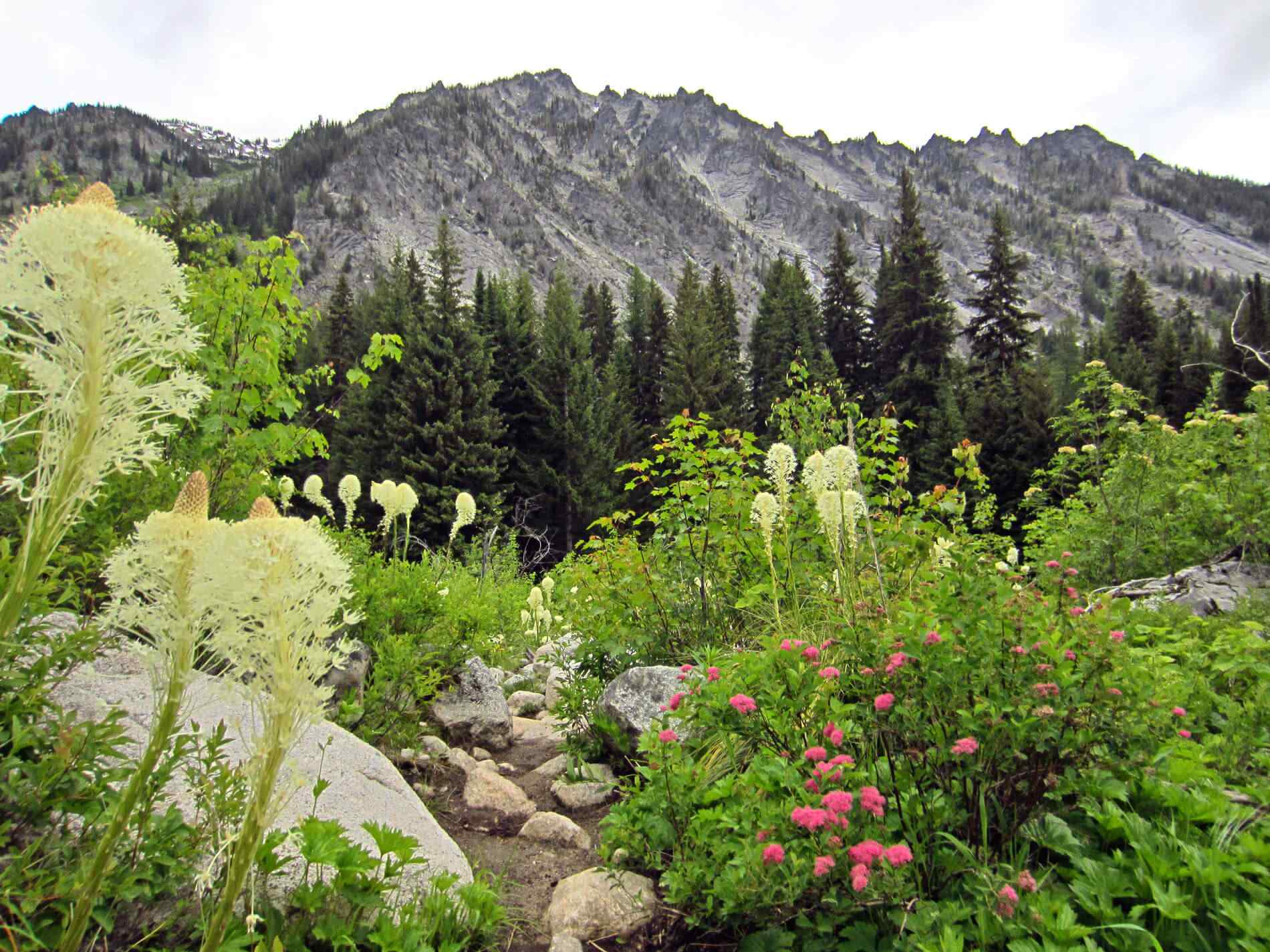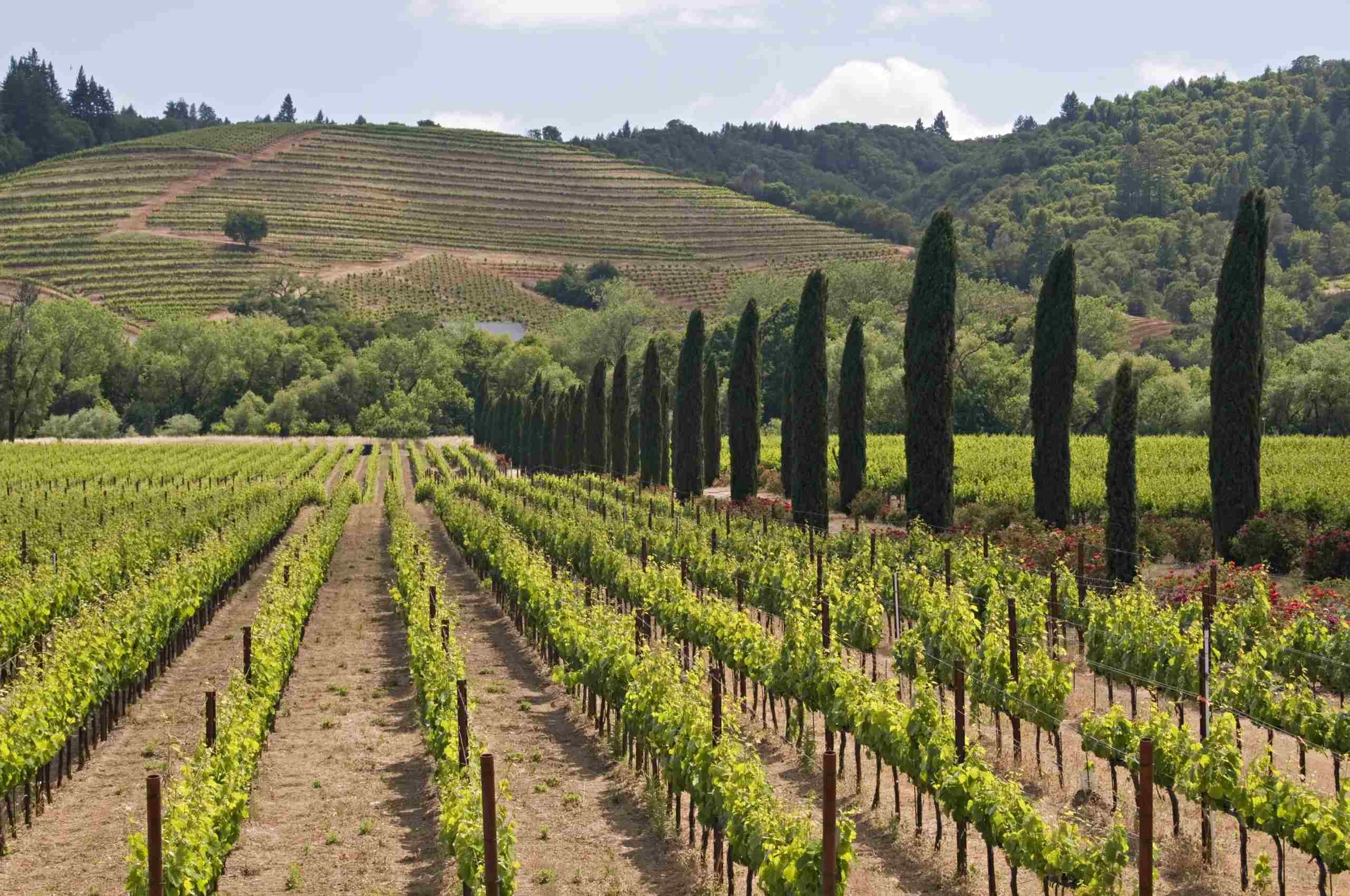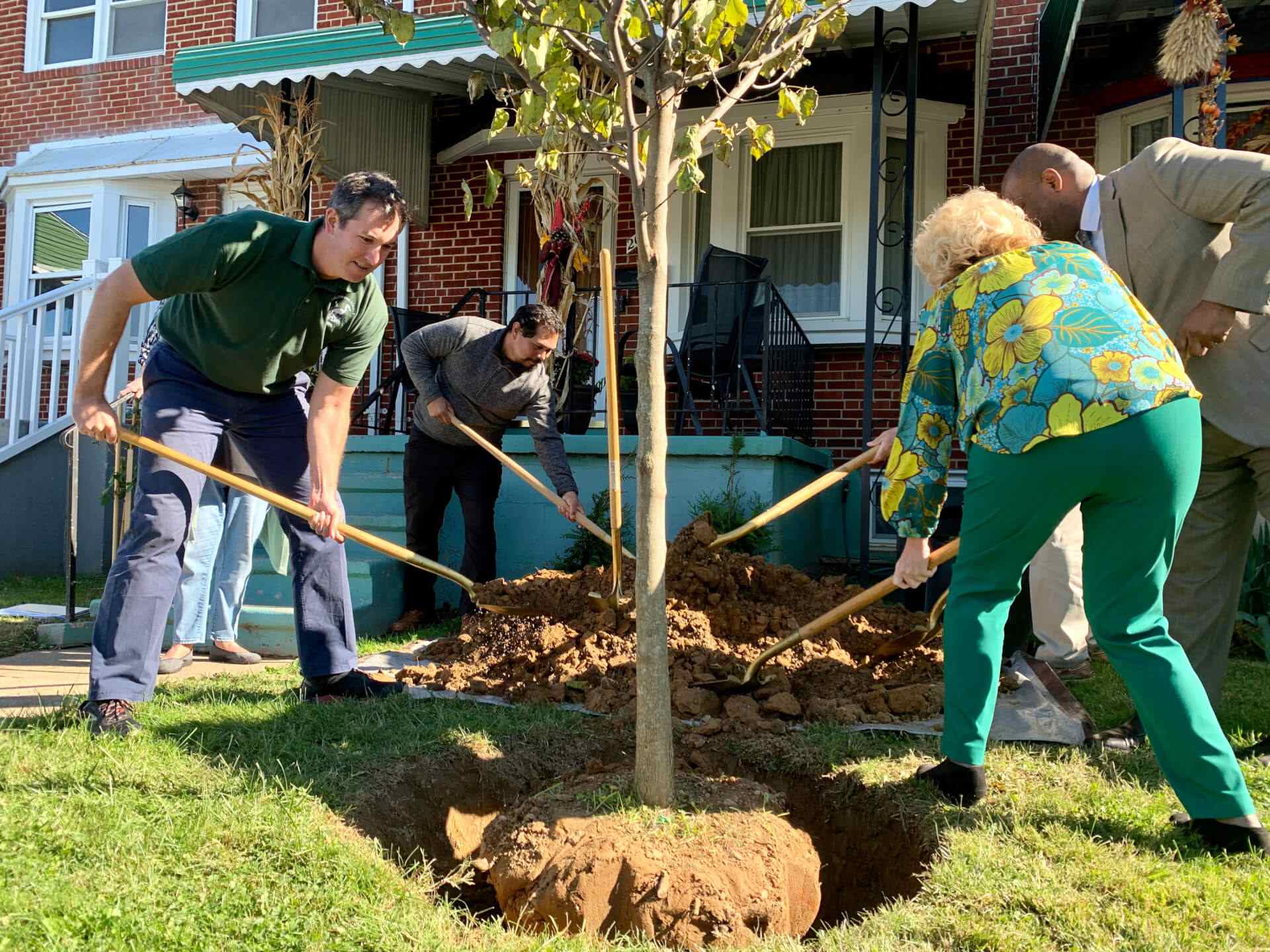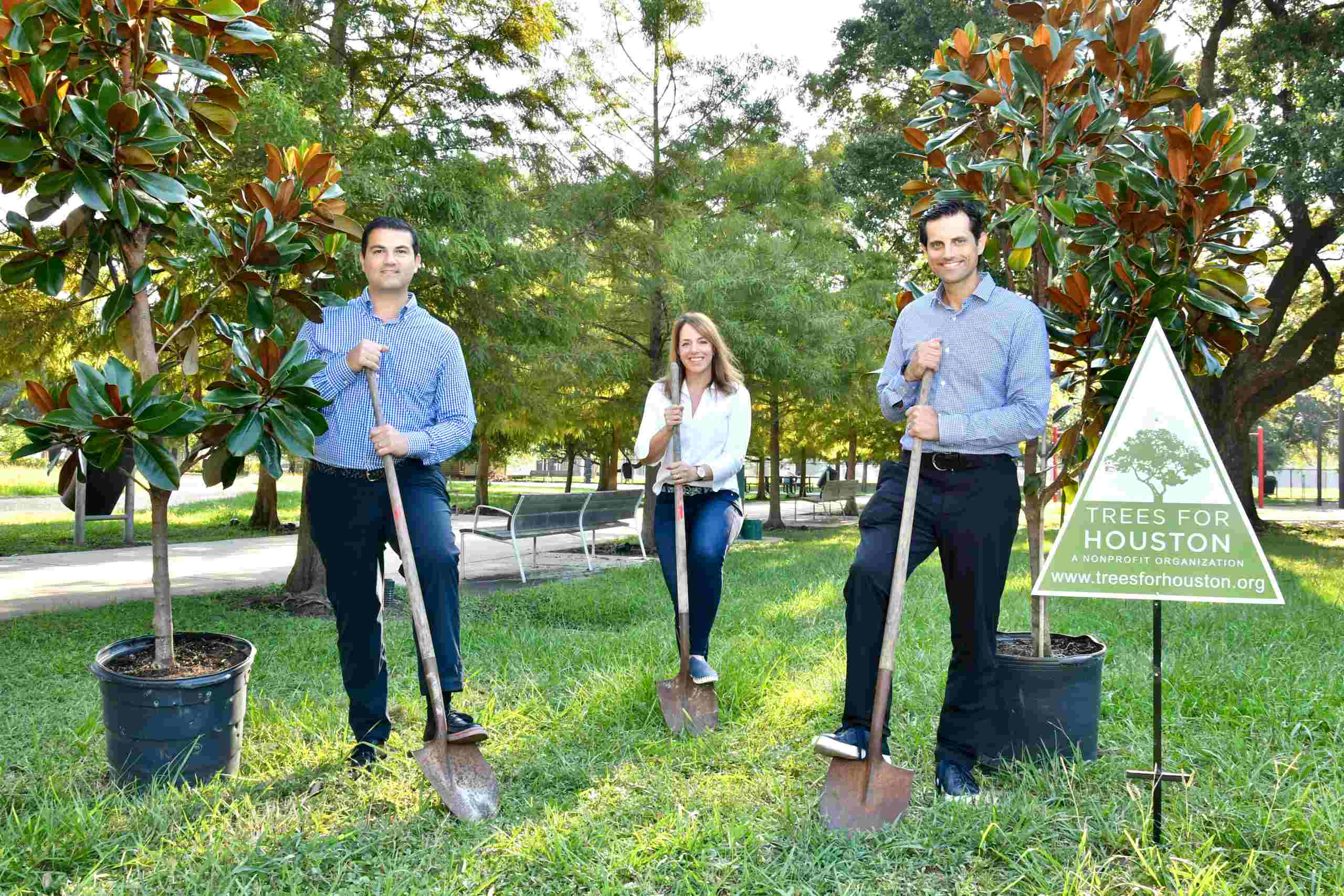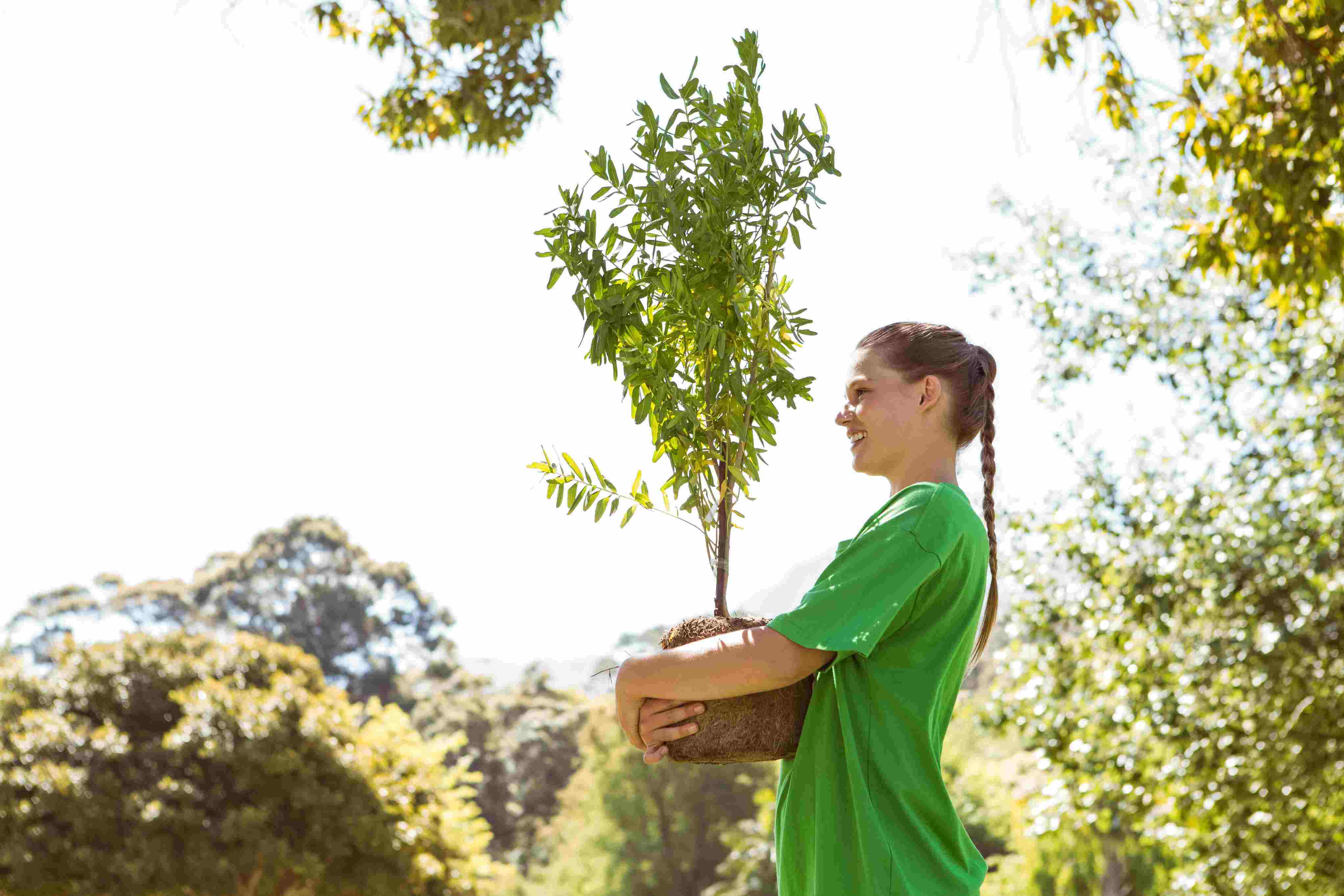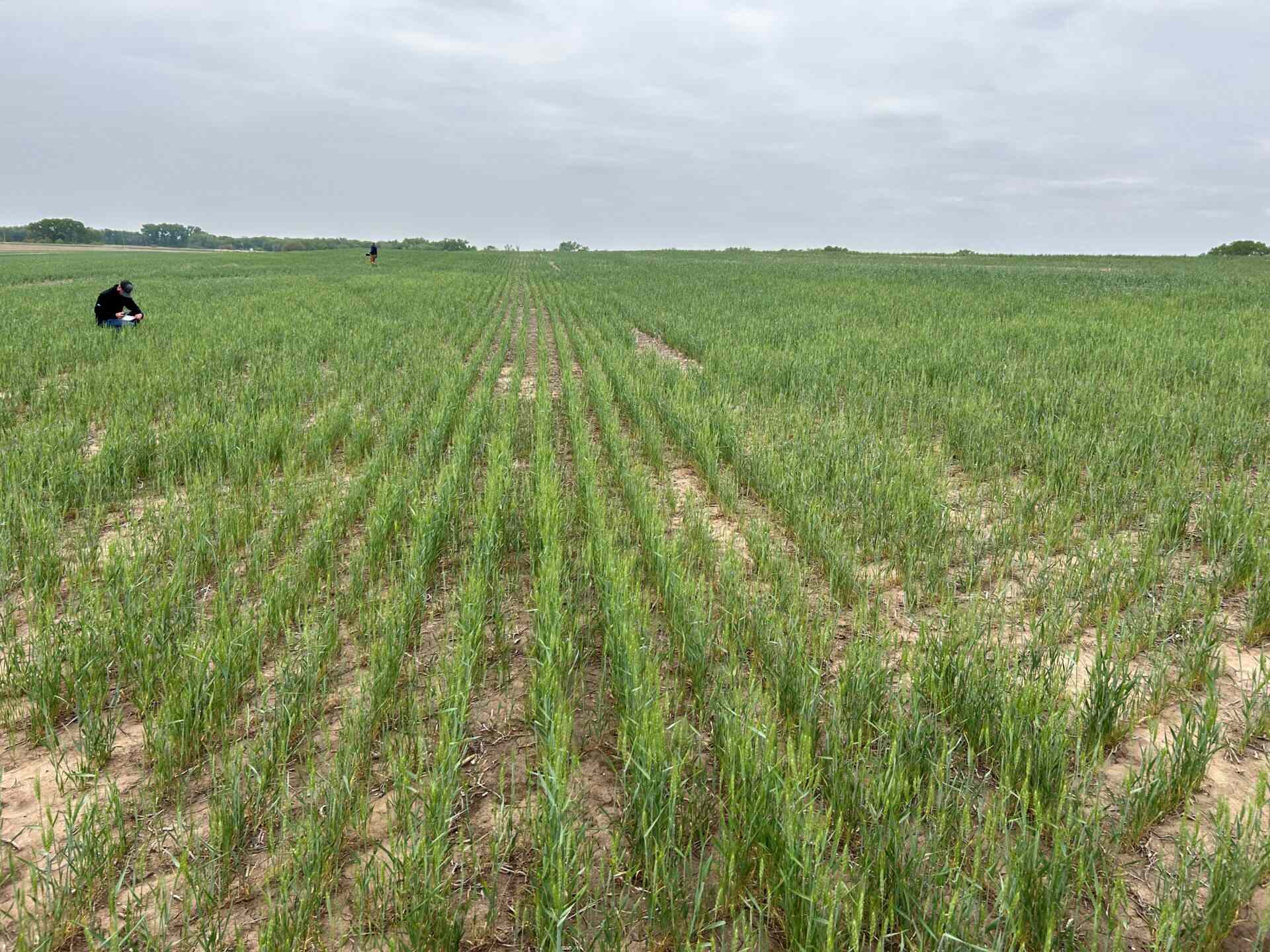Home>Gardening Basics>Understanding Soil>What Planting Zone Is St. Louis, Missouri
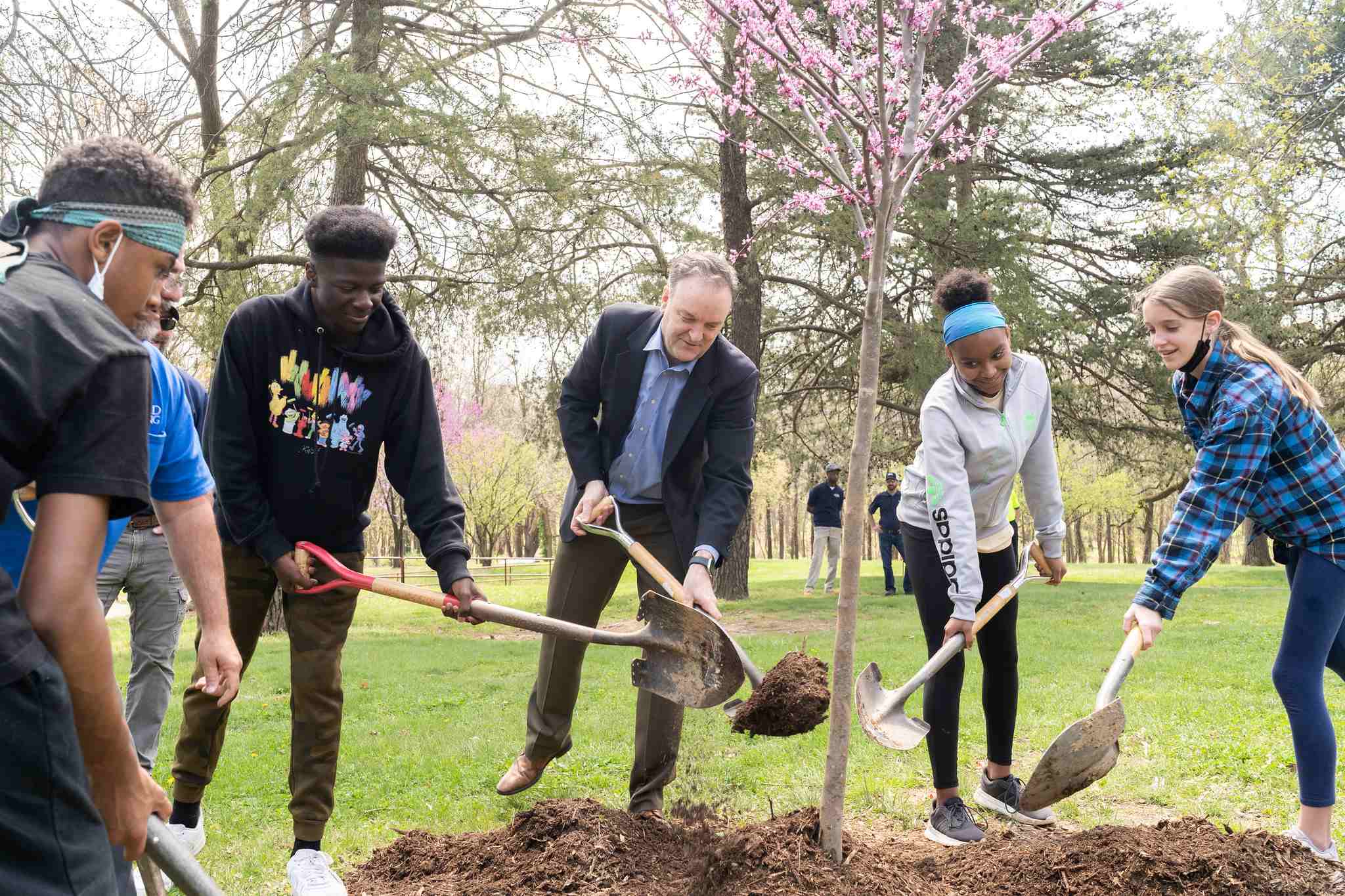

Understanding Soil
What Planting Zone Is St. Louis, Missouri
Modified: January 22, 2024
Learn about the planting zone for St. Louis, Missouri and gain a better understanding of soil types for successful gardening.
(Many of the links in this article redirect to a specific reviewed product. Your purchase of these products through affiliate links helps to generate commission for Chicagolandgardening.com, at no extra cost. Learn more)
Table of Contents
Introduction
Welcome to St. Louis, Missouri, a city known for its vibrant culture, historic landmarks, and beautiful landscaping. If you’re a gardening enthusiast or someone looking to embark on a gardening journey, understanding the planting zones in your area is essential for successful and thriving plants. In this article, we’ll explore the importance of planting zones, delve into the factors that determine them, and discover the specific planting zone for St. Louis, Missouri.
Gardening is more than just a hobby; it’s a way to connect with nature, enhance the beauty of your surroundings, and even grow your own food. However, not all plants thrive in the same conditions, which is where planting zones come into play. Planting zones, also referred to as hardiness zones, provide valuable information about the climate and growing conditions in a particular area.
The United States Department of Agriculture (USDA) has divided the country into multiple planting zones based on minimum winter temperatures. Each zone represents a specific range of temperatures that plants can withstand, therefore helping gardeners choose the most suitable plants for their region.
Understanding and following the designated planting zone for your area is crucial because it ensures that your plants have the best chance of survival and growth. It takes into account various environmental factors that can impact plant health, such as temperature, rainfall, and soil conditions.
Now let’s take a closer look at the factors that determine planting zones and explore the specific climate of St. Louis, Missouri, to understand the planting zone for this region.
Understanding Planting Zones
Planting zones, also known as hardiness zones, are geographical regions that help gardeners determine which plants are most likely to thrive in their specific climate. These zones are based on the average annual minimum temperature and serve as a guide for selecting plants suitable for different areas.
The United States Department of Agriculture (USDA) developed the Plant Hardiness Zone Map to classify and identify these planting zones across the country. The map divides the United States into 11 main zones, ranging from zone 1, which has the coldest temperatures, to zone 11, which has the warmest temperatures.
When choosing plants for your garden, it’s important to consider their hardiness zone requirements. Plants that are suitable for a specific zone are more likely to withstand the typical climate conditions of that area. This can include factors such as extreme temperatures, humidity levels, rainfall patterns, and even elevation.
In addition to the USDA hardiness zones, there are other regional or local planting zone maps that provide more specific information for certain areas. These maps may take into account additional factors like microclimates, soil types, and local weather patterns.
Understanding planting zones is crucial as it helps gardeners make informed decisions about which plants to choose for their garden. By selecting plants that are suited to your specific zone, you increase the chances of having healthy and thriving plants that can withstand the local climate variations.
It’s important to note that planting zones are not the only factor to consider when selecting plants. Other factors such as sunlight requirements, soil pH, and moisture levels should also be taken into account to ensure optimal growth.
By understanding planting zones and their significance, you can create a garden tailored to your specific climate conditions, which in turn increases the likelihood of successful gardening endeavors.
The Importance of Planting Zones in Gardening
Gardening is a rewarding and enjoyable activity, but it’s crucial to understand the importance of planting zones in order to create a thriving garden. Planting zones provide valuable information about the climate and growing conditions of a specific area, allowing gardeners to choose plants that are best suited for their region.
One of the main reasons why planting zones are important in gardening is because they help determine which plants have a higher chance of survival and success in a particular climate. Different plants have different temperature requirements, and planting zones provide guidance on which plants can tolerate the minimum winter temperatures of a specific region.
Planting outside of the recommended zone can lead to poor growth, vulnerability to pests and diseases, and ultimately, the failure of your garden. By understanding your planting zone and selecting plants accordingly, you can ensure that your garden thrives and remains resilient.
Another crucial aspect of planting zones is that they consider other environmental factors beyond just temperatures. They take into account factors like rainfall, humidity, soil conditions, and elevation. These factors play a significant role in determining the success of your garden and the types of plants that can thrive in your area.
For example, in areas with high rainfall, you’ll want to select plants that can handle excessive moisture without developing root rot. Likewise, if you live in an area with acidic soil, you’ll want to choose plants that are adapted to those conditions. Planting zones can guide you in making these decisions, ensuring that you’re selecting plants that are well-suited to your garden’s unique environment.
Furthermore, planting zones help gardeners make informed decisions about when to plant and harvest their crops. By understanding the average frost dates and the length of the growing season in their zone, gardeners can plan their planting schedule accordingly, maximizing their chances of a bountiful harvest.
Overall, planting zones are a valuable tool in gardening as they provide vital information about the climate and growing conditions of a specific area. They enable gardeners to select plants that are best adapted to their region, promoting healthy growth and increased success rates in gardening endeavors.
Factors Determining Planting Zones
Planting zones are determined by a variety of factors that collectively define the climate and growing conditions of a particular area. These factors play a crucial role in helping gardeners choose plants that are most likely to thrive in their specific region. Here are some of the key factors that contribute to the determination of planting zones:
1. Minimum Winter Temperatures: The primary factor in determining planting zones is the average minimum winter temperature of an area. This factor helps gauge the cold hardiness of plants and the likelihood of survival during harsh winter conditions. The USDA Plant Hardiness Zone Map is specifically based on this factor, categorizing regions into different zones based on their typical winter temperatures.
2. Frost Dates: Frost dates, including the last frost in spring and the first frost in fall, are important considerations when determining planting zones. Knowing the average dates of frost allows gardeners to plan their planting schedule and avoid damage to tender plants by planting them too early or harvesting crops too late.
3. Rainfall and Precipitation: The amount and distribution of rainfall also impact planting zones. Different plants have varying moisture requirements, and regions with higher average rainfall may support a different range of plants compared to regions with lower precipitation. The availability of water resources is crucial for plants to thrive and establish healthy root systems.
4. Elevation and Topography: Elevation and topography significantly affect microclimates within a larger region. Higher elevations generally experience cooler temperatures, and slopes can influence sun exposure and drainage. These factors contribute to variations in planting zones within a single geographical area.
5. Soil Type and Composition: The type of soil and its composition influence the ability of plants to access nutrients, retain moisture, and establish strong root systems. Different plants thrive in different soil types, such as sandy, loamy, or clay soils. Planting zones take soil characteristics into account to guide gardeners in selecting plants that are adapted to their local soil conditions.
6. Regional Climate Patterns: Climate patterns, such as prevailing winds, humidity levels, and microclimates, also impact planting zones. Coastal regions may have different temperatures and moisture levels compared to inland areas, while areas near large bodies of water may experience milder temperatures due to the moderating effect of water bodies.
By considering these factors, gardening organizations and institutions develop comprehensive guidelines and maps that categorize regions into different planting zones. These zones provide valuable information to gardeners, helping them select plants that are well-suited to their specific climate and growing conditions.
Climate in St. Louis, Missouri
St. Louis, Missouri, experiences a humid continental climate characterized by hot summers, cold winters, and moderate precipitation throughout the year. Understanding the climate of an area is essential for selecting appropriate plants and planning successful gardening activities.
Summers in St. Louis are typically hot and humid, with average temperatures ranging from the high 80s to low 90s Fahrenheit (around 28-32 degrees Celsius). Heatwaves with temperatures exceeding 100 degrees Fahrenheit (38 degrees Celsius) are not uncommon. The region receives a moderate amount of rainfall during this season, providing necessary moisture for plants to thrive.
Winters in St. Louis are cold with average temperatures ranging from the high 30s to low 40s Fahrenheit (around 4-6 degrees Celsius). However, temperatures can occasionally drop below freezing, and the region experiences snowfall during the winter months. Frost dates generally occur between late October and early April, highlighting the importance of selecting cold-hardy plants for winter gardening.
Spring and fall in St. Louis are transitional seasons, with mild temperatures and moderate levels of rainfall. Spring brings renewed growth and bloom, with average temperatures ranging from the 50s to 70s Fahrenheit (around 10-25 degrees Celsius). Fall brings cooler temperatures, with average highs in the 60s and 70s Fahrenheit (around 15-25 degrees Celsius), which creates favorable conditions for cool-season crops and the vibrant changing of leaves.
St. Louis receives an average annual rainfall of around 40 inches (approximately 102 cm) spread fairly evenly throughout the year. This consistent precipitation helps maintain soil moisture levels and supports the growth of a wide range of plants.
It’s important to note that St. Louis is prone to severe weather events, including thunderstorms, heavy rainfall, and occasional tornadoes. These weather patterns should be taken into account when planning and maintaining a garden, ensuring proper drainage systems, and selecting plants that can withstand such conditions.
The combination of the climate factors in St. Louis, including hot summers, cold winters, moderate rainfall, and the occasional severe weather, sets the stage for a diverse range of plants that can thrive in this region.
Now, let’s explore the specific planting zone for St. Louis, Missouri, taking into account the climate characteristics we’ve discussed.
Planting Zone for St. Louis, Missouri
The planting zone for St. Louis, Missouri, is classified as USDA Hardiness Zone 6a. This zone is characterized by average minimum winter temperatures ranging from -10°F to -5°F (-23°C to -21°C). It’s important to select plants that can withstand these cold temperatures to ensure their survival during the winter months.
Being in Zone 6a provides a range of planting options for St. Louis gardeners. Many popular garden plants and vegetables can thrive in this zone, including but not limited to:
- Tomatoes
- Peppers
- Zucchini
- Cucumbers
- Lettuce
- Carrots
- Beans
- Herbs such as basil, parsley, and rosemary
- Flowering perennials like coneflowers, hostas, and daylilies
- Deciduous trees like maple, oak, and dogwood
It’s important to consider the specific needs and tolerances of each plant before adding them to your garden. While St. Louis has a favorable climate for a wide range of plants, it’s still essential to select varieties that can handle the specific temperature extremes and other climate factors in the region.
Additionally, it’s important to note that microclimates can exist within St. Louis, influenced by factors such as elevation, proximity to bodies of water, and urban heat island effects. These microclimates may create slightly different growing conditions, allowing for the cultivation of plants that may not typically thrive in the broader planting zone.
To determine the best plants for your specific microclimate, it’s recommended to consult local gardening resources, speak with experienced gardeners in the area, or consult with your local agricultural extension office. They can provide valuable insights and recommendations based on the specific conditions in your neighborhood.
Understanding the specific planting zone for St. Louis, Missouri, allows gardeners in the area to choose plants that are well-suited to the local climate conditions. By selecting appropriate plants, you can ensure the long-term success and health of your garden.
Recommended Plants for St. Louis, Missouri
With its unique climate and planting zone, St. Louis, Missouri, offers a wide range of plant species that can thrive in its conditions. Whether you’re looking to grow vegetables, flowers, or trees, here are some recommended plants that are well-suited to the St. Louis region:
Vegetables and Herbs
- Tomatoes: Varieties such as ‘Celebrity,’ ‘Better Boy,’ and ‘Roma’ are known to perform well in St. Louis gardens, providing delicious homegrown tomatoes.
- Peppers: Choose varieties like ‘Bell’ peppers, ‘Jalapeno,’ or ‘Anaheim’ peppers, which can withstand the summer heat and add flavor to your culinary creations.
- Leafy Greens: Lettuce, spinach, kale, and Swiss chard are cool-season greens that thrive during the spring and fall seasons, bringing freshness to your salads and dishes.
- Herbs: Basil, parsley, thyme, and rosemary are culinary herbs that can be grown successfully in St. Louis gardens, providing flavorful additions to a variety of dishes.
Flowering Plants
- Coneflowers: These native perennials, such as ‘Purple Coneflower’ (Echinacea purpurea) and ‘PowWow Wild Berry,’ are known for their stunning colors and ability to attract pollinators.
- Hostas: With their beautiful foliage and shade tolerance, hostas are popular choices for St. Louis gardens. Varieties like ‘Halcyon’ and ‘Francee’ provide lush greenery.
- Daylilies: These vibrant perennials come in various colors and varieties, such as ‘Stella de Oro’ and ‘Happy Returns,’ and are known for their hardiness and long-lasting blooms.
- Black-eyed Susans: These cheerful daisy-like flowers, also known as Rudbeckia, add a burst of color to the summer garden and attract butterflies and bees.
Trees and Shrubs
- Maple Trees: Varieties like ‘Red Maple’ (Acer rubrum) and ‘Sugar Maple’ (Acer saccharum) provide beautiful fall foliage, adding vibrant colors to your garden landscape.
- Oak Trees: Species like ‘White Oak’ (Quercus alba) and ‘Northern Red Oak’ (Quercus rubra) provide shade and stunning architectural features to your yard.
- Dogwood Trees: The ‘Cornus florida’ tree species, with its iconic white or pink blooms in spring, is a popular choice for St. Louis gardens.
- Hydrangeas: Varieties such as ‘Endless Summer’ and ‘Annabelle’ thrive in St. Louis gardens, providing beautiful clusters of colorful flowers.
These are just a few examples of plants that are well-suited to the St. Louis region. However, it’s important to consider factors like sunlight requirements, soil conditions, and individual plant care needs when selecting specific varieties for your garden. Consulting local garden centers, nurseries, or experienced gardeners in the area can provide additional insights and recommendations based on your specific gardening goals and conditions.
By choosing plants that are suited to St. Louis’ climate and planting zone, you increase the likelihood of a successful and vibrant garden that enhances the beauty of your outdoor space.
Tips for Successful Gardening in St. Louis, Missouri
Gardening in St. Louis, Missouri, can be a rewarding and enjoyable experience. To help ensure the success of your garden, here are some valuable tips to keep in mind:
1. Know Your Planting Zone:
Understanding the specific planting zone for St. Louis (Zone 6a) is crucial. It helps you choose plants that are well-suited to the climate and temperature ranges of the region, increasing their chances of thriving in your garden.
2. Plan According to Frost Dates:
Refer to the average frost dates in St. Louis to plan your planting schedule. Avoid planting cold-sensitive plants too early in the season and be prepared to protect tender plants if a late frost is expected.
3. Prepare the Soil:
Ensure that your soil is well-draining and enriched with organic matter. Improved soil quality promotes healthy root growth and optimal plant development. Consider conducting a soil test to determine if any amendments are needed.
4. Water Properly:
Pay attention to the moisture needs of your plants, taking into account the rainfall patterns in your area. Water deeply and less frequently to encourage plants to develop deep roots. Avoid overwatering, as it can lead to root rot or other water-related issues.
5. Mulch for Moisture and Weed Control:
Apply a layer of organic mulch around your plants to help retain soil moisture and control weed growth. Mulch also helps regulate soil temperature and reduce the need for frequent watering.
6. Adapt to Summer Heat:
St. Louis summers can be hot and humid. Provide shade or use shade cloth for delicate plants that are sensitive to intense sunlight. Water early in the day to reduce water evaporation and stress on your plants.
7. Practice Integrated Pest Management:
Regularly inspect your plants for signs of pests or diseases and take appropriate action. Research and implement integrated pest management (IPM) strategies that focus on prevention, cultural practices, and targeted organic remedies to minimize the use of harmful chemicals.
8. Rotate Crops:
To reduce the risk of pests and diseases, practice crop rotation in your vegetable garden. Avoid planting the same crop or a closely related crop in the same spot year after year.
9. Stay Informed:
Stay updated on local gardening resources, join gardening clubs or forums, or participate in community events to stay connected with fellow gardeners and gain insights from experienced individuals who have successfully cultivated plants in the St. Louis area.
By following these helpful tips, you can increase your chances of having a successful and thriving garden in St. Louis, Missouri. Embrace the joy of gardening, experiment with different plant varieties, and enjoy the beauty and satisfaction that comes from nurturing your garden space.
Conclusion
Gardening in St. Louis, Missouri, requires an understanding of the planting zones, climate, and specific factors that contribute to successful garden cultivation. By acknowledging the importance of planting zones, gardeners can select plants that are well-suited to the local climate and environmental conditions. Considerations such as minimum winter temperatures, frost dates, rainfall patterns, elevation, soil type, and regional climate all influence the viability and growth of plants in the region.
St. Louis, with its USDA Hardiness Zone 6a designation, offers a diverse array of plant options for both vegetable and flower gardens. From tomatoes, peppers, and leafy greens to coneflowers, hostas, and daylilies, there are numerous options to choose from. Additionally, maple trees, oak trees, and hydrangeas can add beauty and shade to your landscape.
To ensure successful gardening in St. Louis, it’s essential to heed valuable tips such as knowing the planting zone, planning according to frost dates, preparing the soil, practicing proper watering and mulching techniques, adapting to summer heat, implementing integrated pest management, rotating crops, and staying informed through community engagement.
Remember that gardening is a continuous learning process, and each growing season comes with its unique challenges and rewards. By staying connected with local gardening resources and fellow enthusiasts, you can exchange insights and gain valuable knowledge to foster a flourishing garden.
So, whether you have a small backyard plot or a sprawling garden, embrace the beauty of St. Louis’ climate, explore the recommended plant varieties, and apply the tips shared here to create a vibrant and thriving garden that brings joy and satisfaction for years to come.

